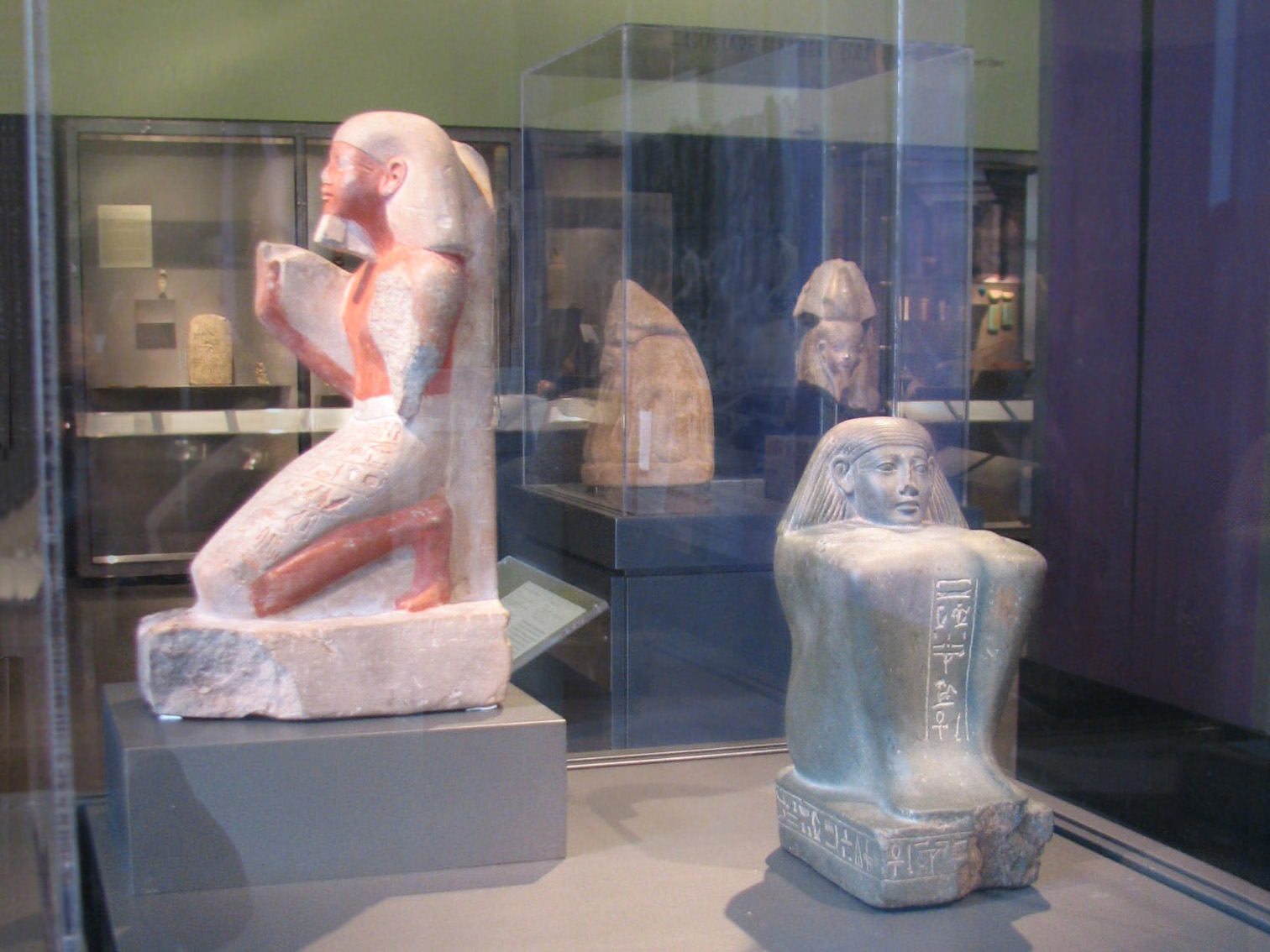
Photo © Joan Ann Lansberry, May 2008-2016

|
Another view from the 'introductory room', as evidenced by the Flaubert quote.
Statue to our left:
Block statue to our right:
Description from museum website
I amuse myself by thinking the fellow all scrunched up is giving example of the original 'cubism' in art. But there there may be more to it than just the surface pose. Richard Wilkinson says of these; "Small variations in a given form may sometimes convey different symbolic meanings, especially in representations of the human figure. The Egyptian 'block' statue, for example, occurs with several variations in each case. Many examples simply depict their subjects as though seated within the temples where many of the statues were sited. Others seem to represent the person in a carrying chair, doubtless implying a level of status, or depict the figure in a form similar to the 'seated god' hieroglyph, suggesting the divine nature of the deceased person." (_Symbol and Magic in Egyptian Art_, page 34)
|


